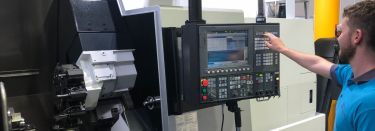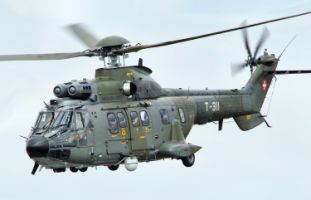RUAG Aviation apprentices build new exhaust system for historic Dewoitine D.26 aircraft

Providing life cycle support for a wide range of military aircraft and business jets is the core business of RUAG Aviation. The extensive expertise of RUAG technicians also means they have the skills to maintain vintage aircraft. Over the past few months, RUAG aircraft specialists and their apprentices equipped a Dewoitine D.26 HB-RAG/286 with a brand new, hand-crafted exhaust system. Repairing this 1930s training plane was an exciting challenge for all concerned.
Following installation of the new system and a successful first flight, the Swiss Federal Office of Civil Aviation (FOCA) cleared the aircraft for flight operations.
Built in 1931, the Dewoitine D.26 series was used by the Swiss Air Force as a training aircraft for fighter and formation operations until 1948. A powerful aircraft, it was then deployed at many Swiss airfields to help launch gliders. A period of inactivity followed and the condition of this particular aircraft slowly deteriorated. That was until 1992, when a group of retired aircraft mechanics based in Interlaken began putting in the more than 10,000 man hours required to make the aircraft ready for flight once again. Since then, the Dewoitine – now bearing the registration HB-RAG – has been maintained by Hangar 31, an aircraft association in Grenchen. Hangar 31 uses the Dewoitine D.26 aircraft to help bring Grenchen’s rich aviation history to life for the interested public.
In August 2016, the Dewoitine appeared at an airshow in Wittinsburg where, during the landing procedure, it overshot the runway and came to rest upside down in a cornfield. Miraculously, the pilot escaped unscathed but the aircraft suffered damage to its propeller, wings and tail section.
Hangar 31 had contacted RUAG Aviation even before the accident because the aircraft’s aging exhaust system was no longer working properly. Following an in-depth test, RUAG Aviation decided to manufacture an entirely new exhaust system in its apprentice workshop.
The project presented the apprentices and their experienced mentors with some major challenges. Due to the extremely compact design of the Dewoitine’s nine-cylinder radial engine, new parts had to be manufactured, requiring the absolute best precision, while hand working the metal called for a great deal of expertise. In May 2017, the new exhaust system was fitted to the aircraft, by then awaiting full repair in the town of Bex, followed by the last finishing touches in June. The aircraft was then able to be flown from Bex to Grenchen, where it finally received the all-clear from FOCA to undertake further flights.
Adrian Heer, Senior Manager Vocational Training states, “We are proud that our apprentices played such a major role in this project. In doing so they have helped preserve a piece of aviation history for future generations.”
Peter Brotschi, President of the Hangar 31 association, greatly appreciates the successful cooperation with RUAG Aviation. “We are truly grateful for the outstanding work performed by the expert technical team as well as the apprentices. Their highly precise reproduction of the Dewoitine’s exhaust system ensures that an aircraft, built and flown during the time of their great-grandparents, can still take to the skies today. RUAG Aviation contributed significantly to aviation’s cultural heritage with this project. At the same time, we are convinced that the apprentices were able to glean additional technical prowess, during the very challenging production process, which will continue to prove invaluable throughout their career.”







